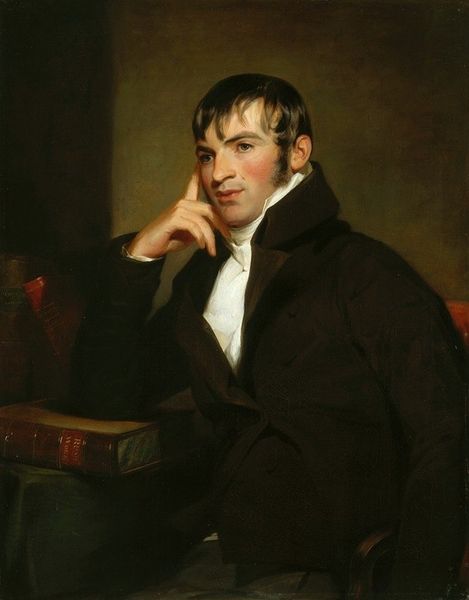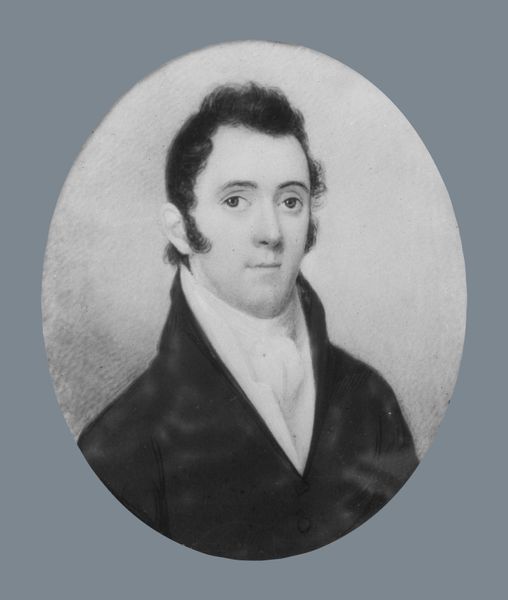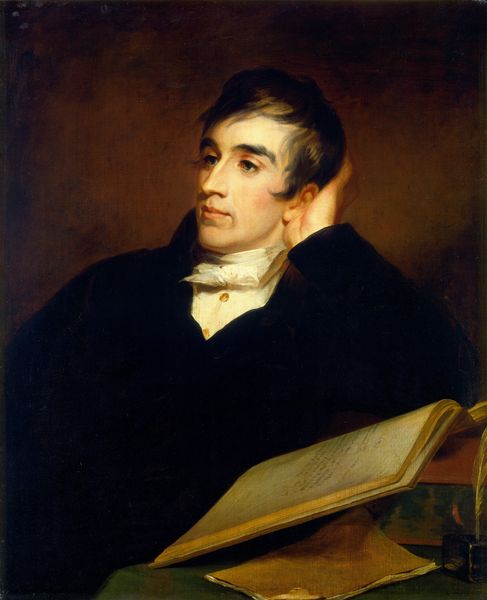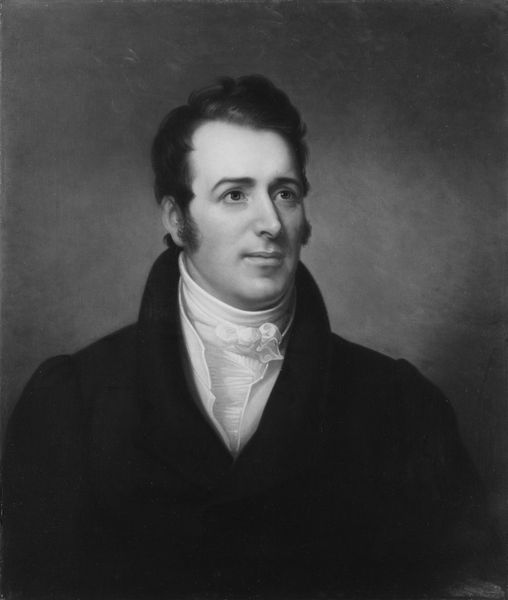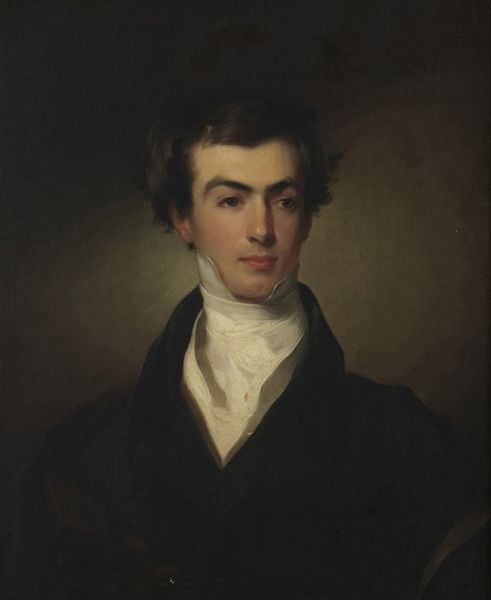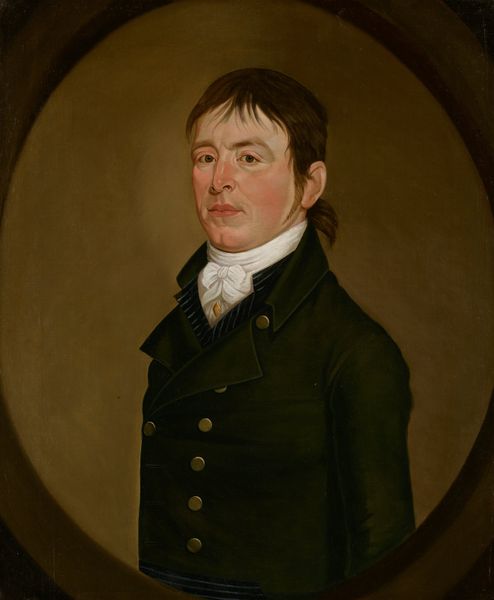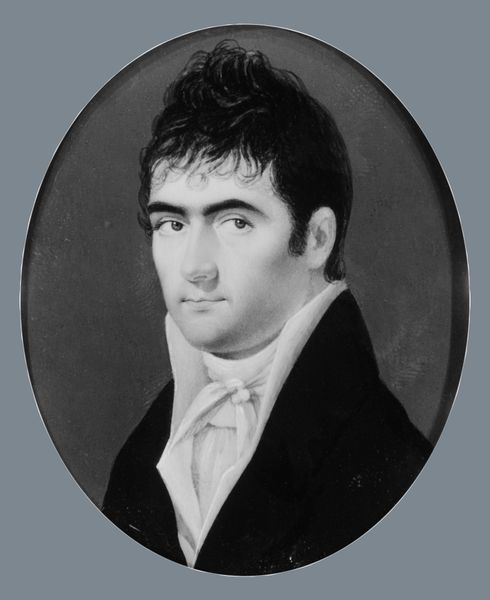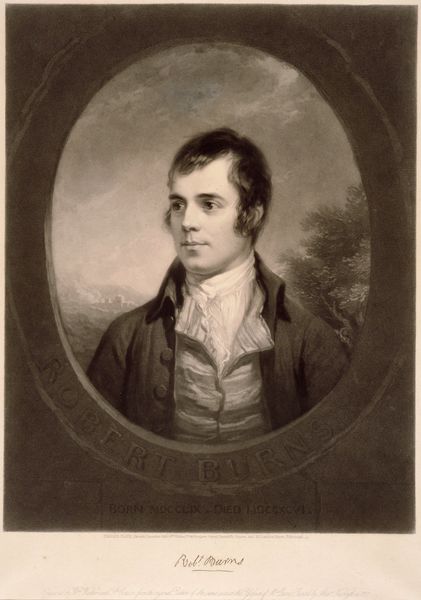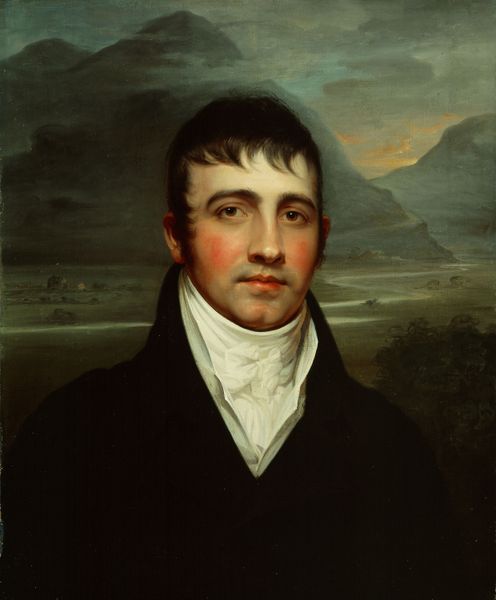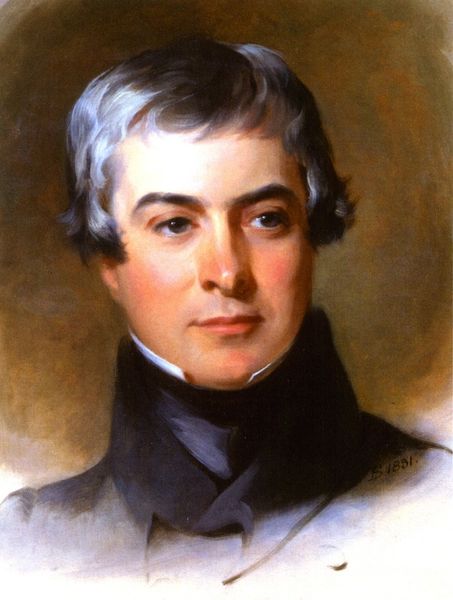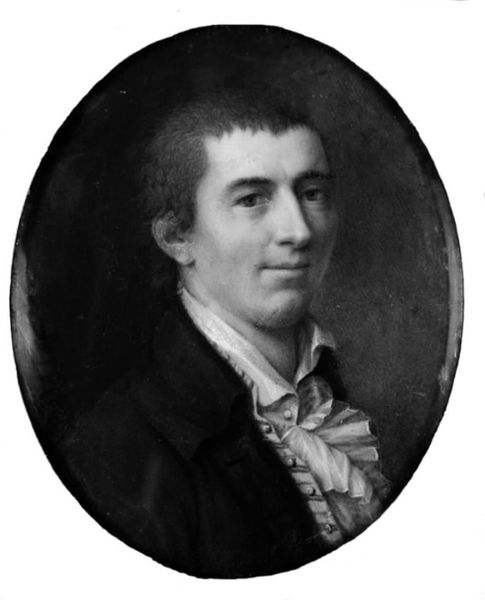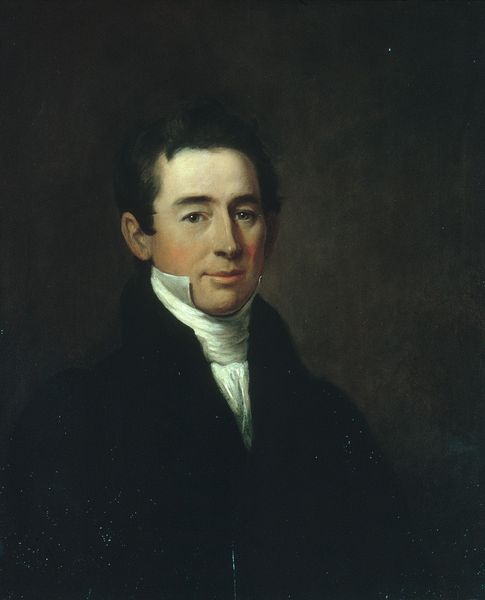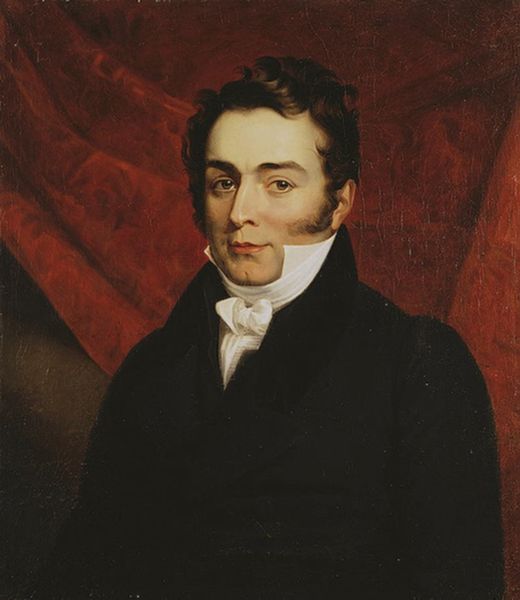
painting
#
portrait
#
portrait
#
painting
#
romanticism
#
academic-art
Dimensions: 4 5/16 x 3 1/2 in. (11 x 8.9 cm)
Copyright: Public Domain
Curator: Looking at this portrait, I feel an immediate sense of reserve. Editor: I agree. I see a certain quietude. Here we have Charles Fraser's portrait of Rev. Christopher Edwards Gadsden, painted in 1819. The oil painting is currently part of the Metropolitan Museum's collection. Curator: The sharp contrast of the black coat against his stark white collar focuses my attention right on his face. His expression, caught between serenity and seriousness, almost asks for our reflection. I see how powerful the symbology of light and dark is in communicating something like divine presence or righteousness. Editor: It's interesting you mention righteousness. Gadsden, as an Episcopalian minister, held a significant role within his community. These portraits were tools, you know? This was made to broadcast a certain public image, both civic and pious. Curator: Oh certainly, it wasn't just a simple likeness. Fraser's artistic choices actively crafted a perception of authority and spiritual devotion. Notice his gaze; it suggests thoughtfulness and inner contemplation. I'm drawn to how Romanticism influences portraiture, emphasizing emotion as something foundational to the image. Editor: Right. The placement of such portraits in churches or prominent family homes served a definite function: solidifying the cultural influence of the sitter and upholding the social order of the time. It's about more than just memorializing someone. Curator: Indeed. What seems simple contains layered messaging that would speak directly to those viewing the painting in its original context. Today, its meaning becomes more subtle and speaks to enduring psychological questions regarding faith and character. Editor: Yes, it has transitioned into an art object, to be observed and contemplated outside the church. Viewing the past through works such as these prompts me to wonder what kind of a legacy any of us may be so actively, yet passively, constructing. Curator: Exactly, thinking about legacy connects this moment with his and, now, our own as observers. A fascinating journey back and forth.
Comments
No comments
Be the first to comment and join the conversation on the ultimate creative platform.
